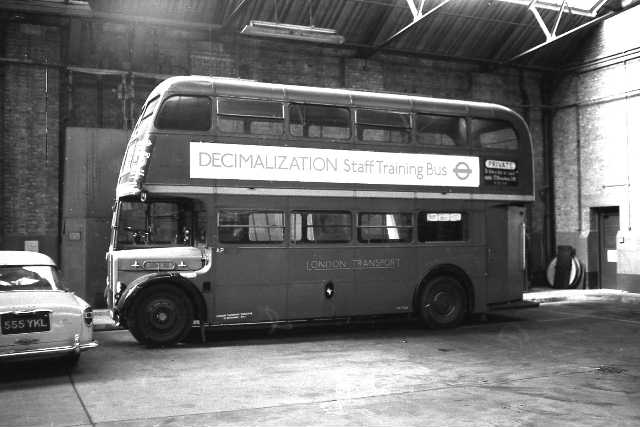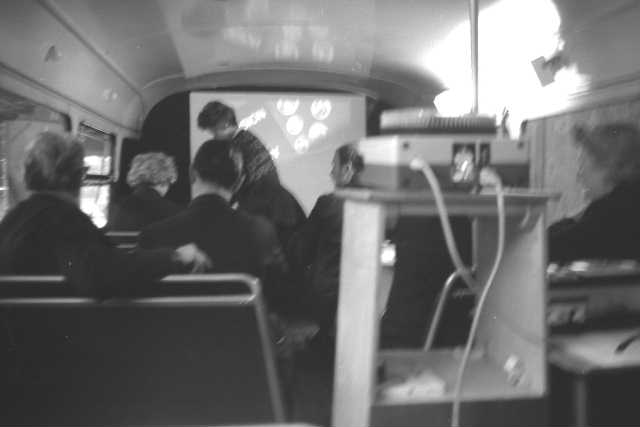

| Decimalization Day or D Day as it was known at the time was on 15 February
1971. This meant a lot of preparation by organization such as London Transport.
One of the things to organize was staff training. Not only road and rail
staff, but all who handled cash and done accounting. for road staff several
RT buses were converted for use in staff training.
In the photograph is RT 3828. NXP 835. seen in Abbey Wood garage. The top deck was a mini lecture theatre with facilities for showing slide. The lower deck was left for role playing using gibson ticket machines. This photograph was taken in September 1970 long before D Day itself. Other buses converted to mobile classrooms were:-
Photograph. John King. |

| This picture shows the layout of the top deck of RT 3878. some of the
seats have been removed and replaced with desks. A screen is over the front
windows and a projector is in use. Staff from AW can be seen on board.
Photograph. John King. |
| D day was on February 15, but London Transport, along with may other
large bus operators decided to wait until Sunday 21 February before changing
its fares to decimal. This was to allow for a large number of coins to
come into circulation.
Ten RT buses were converted into mobile classrooms. Around 13,500 staff had to be trained at 68 garages. This took around four months. Plus there was a refresher course in the first weeks of 1971. LT also stored large amounts of sixpences to help over the initial period with change. The minimum fare was 2½p (6d) There was a big campaign in the country to keep the old sixpence as a 2½p coin. After a few weeks however it was found that most of them were travelling in pairs as 5p. The underground along with British Rail started charging decimal prices on Sunday 14 February in front of the rest of the country. |
This page was designed and is maintained
by Toby and John King, I would accept any comments or questions See
Index Page